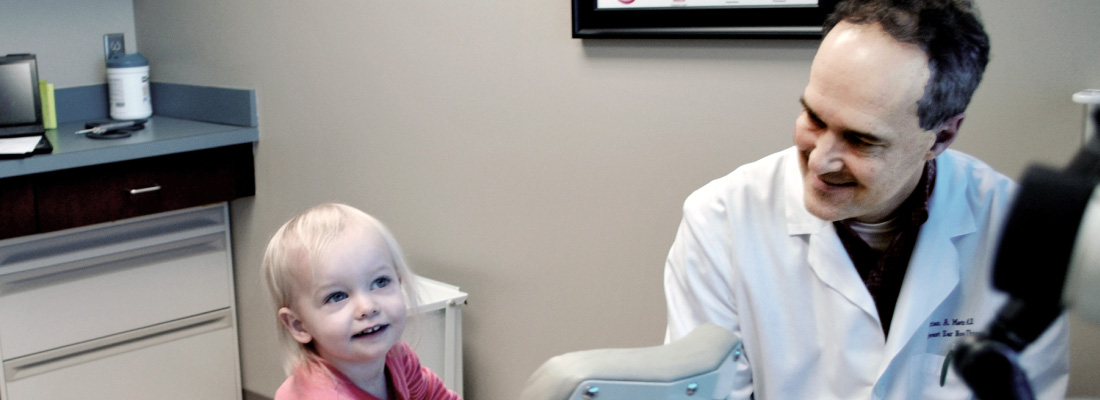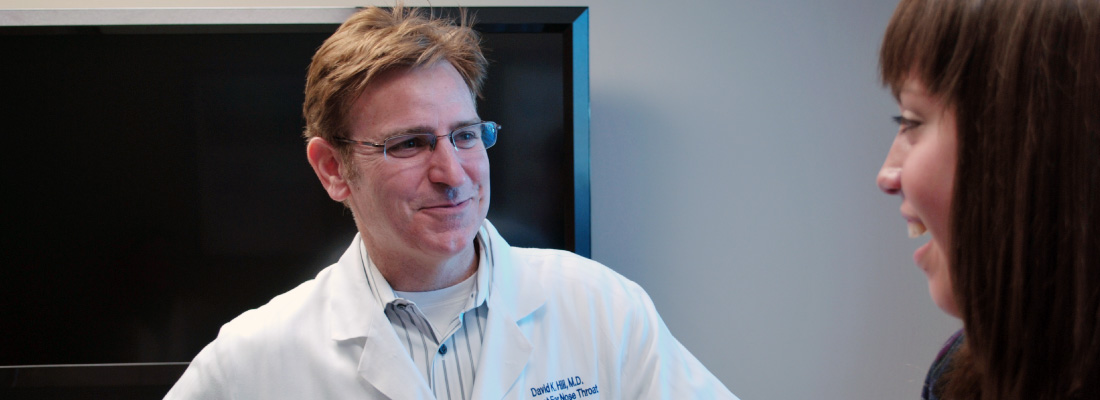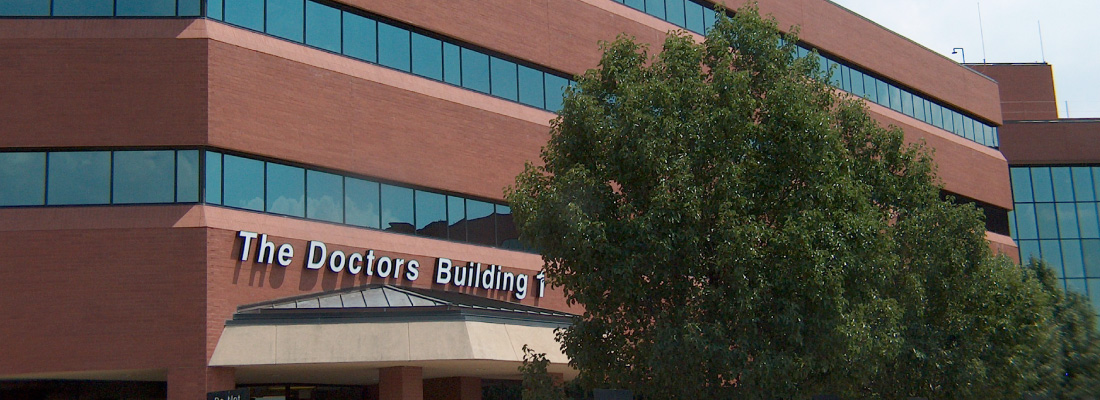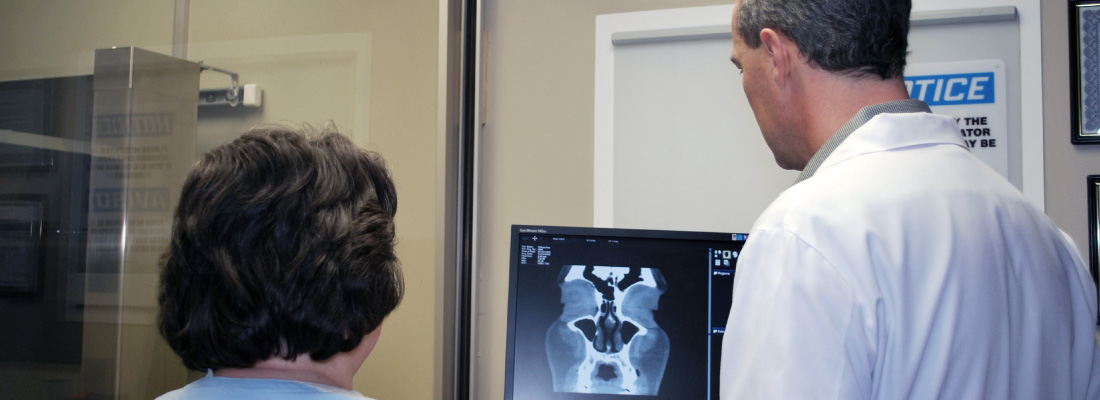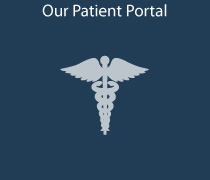Cleft Lip and Cleft Palate
A “cleft” means a split or separation. A cleft palate refers to the roof of your mouth with or without the lip being split as well. Oral clefts are one of the most common birth defects. A child can be born with both a cleft lip and cleft palate, or a cleft in just one area. During normal fetal development between the sixth and eleventh week of pregnancy, the two sides of the lip and palate fuse together. In babies born with cleft lip or cleft palate, one or both of these splits fail to come together.
There are three primary types of clefts. Cleft lip/palate is when both the palate and lip are cleft, which represents about 50 percent of all clefts. About one in 1,000 babies are born with cleft lip/palate. Up to 13 percent of cases involve other birth defects, and occur more often in male children. It is more common in Asian populations and certain groups of American Indians, but less common in African American populations.
Isolated cleft palate is the term used when a cleft occurs only in the palate. About one in 2,000 babies are born with this type of cleft (the incidence of submucous cleft palate, a type of isolated cleft palate, is one in 1,200). This represents about 30 percent of all clefts. All ethnic groups have similar risk for this type of cleft, but it occurs more often in female children.
Isolated cleft lip refers to a cleft in the lip only accounting for 20 percent of all clefts.
What Are the Symptoms of Clefts?
Symptoms of cleft lip/palate include:
- A tiny notch in the upper lip, or up to a split that extends into the nose (cleft in the lip)
- Small malformation that results in minimal problems, up to a large separation of the palate that interferes with eating, leaking into the nose, speaking with a nasal-sounding voice, and even breathing (cleft palate)
- Unilateral, a split on one side, or bilateral, one split on both sides
What Causes Clefts?
No one knows exactly what causes clefts, but most believe they are caused by one or more of three main factors: (1) an inherited characteristic (gene) from one or both parents; (2) poor early pregnancy health or exposure to toxins such as alcohol or cocaine; and/or (3) genetic syndromes. A syndrome is an abnormality in genes or chromosomes that result in multiple malformations in a recognizable pattern occurring together.
Cleft lip/palate is a part of more than 400 syndromes including Waardenburg, Pierre Robin, and Down syndromes. Approximately 30 percent of cleft deformities are associated with a syndrome, so a thorough medical evaluation and genetic counseling is recommended for cleft patients.
Clefting of the lip and palate is usually visible during the baby’s first examination. One exception is a submucous cleft where there are abnormalities in the hard or soft palate that remain covered by a smooth, unbroken lining of the mouth. A child with cleft lip or palate is often referred to a multidisciplinary team of experts for treatment. The team may include: an ENT (ear, nose, and throat) specialist (or otolaryngologist), plastic surgeon, oral surgeon, speech pathologist, pediatric dentist, orthodontist, audiologist, geneticist, pediatrician, nutritionist, and psychologist/social worker.
The complications of cleft lip and cleft palate can vary greatly depending on the degree and location of the cleft. They can include some or all the following:
- Breathing—When the palate and jaw are malformed, breathing becomes difficult. Treatments include surgery and oral appliances.
- Feeding—Problems with feeding are more common in cleft children. A nutritionist and speech therapist that specializes in swallowing may be helpful. Special feeding devices are also available.
- Ear infections and hearing loss—Any malformation of the upper airway can affect the function of the Eustachian tube and increase the possibility of persistent fluid in the middle ear, which is a primary cause of repeat ear infections. Hearing loss can be a consequence of repeat ear infections and persistent middle ear fluid. Tubes can be inserted in the ear by an ENT specialist to alleviate fluid build-up and restore hearing.
- Speech and language delays—Normal development of the lips and palate are essential for a child to properly form sounds and speak clearly. Cleft surgery repairs these structures; speech therapy helps with language development.
- Dental problems—Sometimes a cleft involves the gums and jaw, affecting the proper growth of teeth and alignment of the jaw. A pediatric dentist or orthodontist can assist with this problem.
What Are the Treatment Options?
Treatment of clefts is highly individual, depending on the overall health of the child and the severity and location of the cleft(s). Multiple surgeries and long-term follow up are often necessary. Because clefts can interfere with physical, language, and psychological development, treatment is recommended as early as possible.
Surgery to repair a cleft lip is usually done between 10- and 12-weeks-old. The cleft palate repair procedure, called “palatoplasy,” is done between nine and 18 months. Additional surgeries are often needed to achieve the best results. In addition to surgery, the child may receive follow-up care from members of the multidisciplinary team for speech, dental, or other developmental issues.
What Questions Should I Ask My Doctor?
- When should I have my child evaluated for possible corrective surgery?
- Are any secondary surgeries or procedures required?
- What are the chances that my future children could have cleft lip/palate?
What are possible problems after cleft lip repair that I should look for?
Cholesteatoma
Cholesteatoma is an abnormal skin growth or skin cyst trapped behind the eardrum, or the bone behind the ear. Cholesteatomas begin as a build-up of ear wax and skin, which causes either a lump on the eardrum or an eardrum retraction pocket. Over time, the skin collects and eventually causes problems like infection, drainage, and hearing loss. The skin may take a long time to accumulate and can spread to the area behind the eardrum (the middle ear space) or to the bone behind the ear, called the mastoid bone.
What Are the Symptoms of Cholesteatoma?
Cholesteatoma may cause these symptoms:
- Hearing loss
- Ear drainage, often with a bad smell
- Recurrent ear infections
- Sensation of ear fullness
- Dizziness
- Facial muscle weakness on the side of the infected ear
- Ear ache/pain
If you experience any of these symptoms, you should see an ENT (ear, nose, and throat) specialist, or otolaryngologist, as soon as possible.
What Causes Cholesteatoma?
There are different reasons why a cholesteatoma may develop. The most common cause is poor ventilation of the middle ear space, which is called “eustachian tube dysfunction.” The eustachian tube is the natural tube that connects your middle ear space to your nose and sinuses, and helps regulate the pressure behind your eardrum. If the eustachian tube is not working properly, the middle ear space does not get ventilated. This creates negative pressure and ultimately causes the weakened eardrum to retract. This retraction collects skin and earwax, which leads to a cholesteatoma. Seasonal allergies, upper respiratory infections (cough/cold), or sinusitis may contribute to eustachian tube dysfunction.
A cholesteatoma can develop when skin of the ear canal passes through a hole in the eardrum and into the middle ear space. Finally, another rare type of cholesteatoma is present at birth (congenital) and is related to how the ear develops.
Are There Potential Dangers?
Without proper treatment cholesteatoma will cause recurrent ear infections. Chronic infection of the ear can lead to progressive hearing loss and even deafness. Cholesteatoma can erode bone, including the three bones of hearing, which may cause infection to spread to the inner ear or brain. These infections can lead to meningitis, brain abscess, facial paralysis, dizziness (vertigo), and even death.
What Are the Treatment Options?
Cholesteatoma can be managed in a variety of ways, but definitive removal of the skin or cyst typically requires surgical intervention. Before surgery, your ENT specialist may need to carefully clean your ear and prescribe medications to help stop the drainage. These medications (oral antibiotics) may be taken by mouth, applied directly to the ear (topical antibiotics), or both. It is advised that you keep the ear dry while treating these infections.
The specific type of surgery depends on what part of the ear is involved with the cholesteatoma. Sometimes the extent of disease is clearly seen on the office exam. Other times imaging, often a CT scan, helps to define where the cholesteatoma is located. CT scans are a collection of X-rays that provide good detail on the bony anatomy of the ear. A hearing test, or audiogram, should be obtained. Other tests like an MRI or balance testing are less commonly required.
The primary goal of cholesteatoma surgery is to remove the skin, clear the infection, and create a dry, safe ear. This may involve reconstructing the eardrum, removing bone behind the ear, or reconstructing the hearing bones. In some cases, a second surgery may be required to make sure all the cholesteatoma has been removed before the hearing bones can be rebuilt.
A second surgery will typically be performed six to 12 months after your first surgery, if necessary. Your hearing might temporarily worsen after the first surgery if the reconstruction of your hearing bones is delayed. There are many factors that contribute to how well you hear after surgery, and these should be discussed with your ENT specialist.
Surgery is generally performed in an outpatient setting, but some patients may require an overnight stay. In rare cases of serious infection, a prolonged hospitalization for antibiotic treatment may be required. Interventions for facial nerve weakness or to control dizziness are rarely needed. Time off from work is typically one to two weeks. After surgery, follow-up office visits will be needed to clean your ear, recheck your hearing, and evaluate the results. Cholesteatoma requires long-term surveillance to check for recurrence.
What Questions Should I Ask My Doctor?
- What parts of the ear does my cholesteatoma involve (middle ear, mastoid, or both)?
- Are there any medications I can take or things I can do to stop the ear drainage?
- Will the surgery be through my ear canal, behind the ear, or both?
- Will I need a planned second surgery?
- How long should I keep the ear canal dry after surgery?
- Will there be dizziness after surgery?
- What is the plan for pain control after surgery?
- What type of follow-up will be needed after surgery? What follow-up is needed long-term?
- How do you expect this to affect my hearing?
BPPV – Benign Paroxysmal Positional Vertigo
Do you get a spinning vertigo or dizziness sensation in certain head positions? For example, turning to a particular side when you’re lying in bed, or lying flat on your back without any pillows to support you, or tilting your head back to look up, or tilting your head down as if to tie your shoes? Is it severe, feeling like it lasts several minutes when it probably only lasts a few seconds?
If so, there’s a good chance you have benign paroxysmal positional vertigo, or BPPV (commonly known as “having rocks in the head”). BPPV is the most common inner ear problem and cause of vertigo, or false sense of spinning. It can occur just once or twice, or it can last days or weeks, or, rarely, for months. BPPV is a specific diagnosis and each word describes the condition:
Benign—It is not life-threatening, even though the symptoms can be very intense and upsetting.
Paroxysmal (par-ek-siz-muhl)—It comes in sudden, short spells.
Positional—Certain head positions or movements can trigger a spell.
Vertigo—You feel like you are spinning, or the world around you is spinning.
What Happens in the Inner Ear with BPPV?
The way we maintain balance when we move about is by the complex interactions of both inner ears, the eyes, the muscles down your back, and soles of the feet, and how all of these get processed in the brain. In the inner ear, we have balance canals that detect movement, and balance organs that detect gravity. The gravity organs have tiny calcium carbonate crystals in them, which are often referred to as “rocks.”
In BPPV, a rock or two gets dislodged from the organ and falls towards the balance canals. This usually affects the posterior of the three balance canals on that side, because that’s the lowest one and the rock follows the rules of gravity. So, when you turn your head into those certain positions, the rock pushes on the canal, and the brain thinks you are whirling around. If you stay in that position and open your eyes, within a few seconds the brain figures it out and you stop “whirling.” But this is a scary feeling, so most people with BPPV don’t stay in that position or open their eyes.
What Are the Symptoms of BPPV?
BPPV is the most common cause of vertigo. Vertigo is the unpleasant (often, very frightening) sensation of the world rotating, often associated with nausea and sometimes even with vomiting. What distinguishes BPPV from other causes of vertigo include:
- Vertigo that is experienced after a change in head position such as lying down flat, turning over in bed, tilting back to look up, or tilting down to stoop
- No associated hearing loss or fullness feeling in the ear
- Some nausea, but usually not severe and usually not associated with vomiting
- Vertigo stops as soon as you turn your head away from the provoking position and back to where it was
What Causes BPPV?
BPPV can occur spontaneously, that is, without a real cause. It is commonly seen in the elderly without an underlying cause identified. It can also occur after any type of even minor head trauma, even as small as a violent sneeze or hitting your head on a cabinet, and with major head trauma or after a concussion. It can also occur a long time after another inner ear problem such as labyrinthitis or Ménière’s disease.
How Will My Doctor Know If I Have BPPV?
Your doctor or other healthcare professional will ask you questions about your dizziness and vertigo, and, with careful listening, can often distinguish between BPPV and other types of dizziness. After a thorough examination of your ears, nose, throat, and neck, the doctor will perform a test on you that is called a Dix-Hallpike Maneuver.
You will be seated on a flat surface and then brought down into positions that can provoke the vertigo experienced in BPPV. Another test that looks for BPPV of the horizontal (and not posterior) balance canal is the supine roll test, where you are already lying on your back and your head is moved from side to side. Once the side of the vertigo is identified, the doctor may either immediately offer you a treatment, or may refer you to a specialist (otolaryngologist or vestibular physical therapist) who can offer you that treatment.
What Are the Treatment Options?
The treatment for BPPV involves moving those misplaced rocks or crystals from the active portion of the inner ear to the inactive portion of the inner ear, where they won’t cause dizziness. These treatments are office procedures called Canalith Repositioning Procedures, or CRP. They may be called Epley or Semont maneuvers as well. These are done either in your doctor’s office or by the physical therapist, and involve putting you into a position that causes vertigo, allowing it to pass, and then turning your head carefully to move those tiny crystals in your inner ear to a portion of the inner ear where they won’t do any harm.
The success rates for these office treatments, which take only several minutes, are very high. Most people are “cured” after one or two treatments, but some may need additional “repositioning” treatments. Rarely, people need surgery to close off the posterior canal because there are so many rocks or so much “sludge” that the CRP treatments do not work. The surgery is very effective with minimal risks.
What Is the Wrong Treatment for BPPV?
Many times, patients go to the emergency room or urgent care setting with vertigo that is BPPV, but they are given a vestibular suppressant like meclizine or benzodiazepene instead of being offered CRP. The problem with taking the medication is that it does not address the cause of the problem, and it delays your brain’s ability to compensate and recover.
What Questions Should I Ask My Doctor?
- Do I need a CT scan or an MRI scan?
- Do I need to keep my head in a certain position after CRP?
- Do I need any other testing of my balance system?
- Is it possible that my BPPV will go away by itself?
- What about these self-remedies I see on the internet such as the “half somersault,” etc.?
- Is there anything about my medical condition in particular that would warrant more aggressive treatment?
References
Bhattacharyya N, Gubbels SP, Schwartz SR et al. Clinical Practice Guideline: Benign Paroxysmal Positional Vertigo (Update). Otolaryngol Head Neck Surg 156 (3) suppl, S1-S47.
CPG Update on BPPV – 2017 – podcasts 1 and 2, found here.
You can read the Plain Language Summary of the BPPV Guidelines from 2017 here.
You can read Frequently Asked Questions about BPPV here.
Bell’s Palsy
The facial nerve controls the muscles of your face, ears, the saliva glands in your mouth, as well as the tears in your eyes, and provides some of the sense of taste on your tongue. Bell’s palsy occurs when the facial nerve is damaged by pressure or swelling and does not work properly, resulting in paralysis (weakness) and distortions of the face. Typically, a patient with Bell’s palsy wakes up feeling normal, but is shocked when they look in the mirror and sees how one side of the face has changed.
What Are the Symptoms of Bell’s Palsy?
Symptoms of Bell’s palsy may include:
- Facial drooping or paralysis
- Drooling or a hard time swallowing
- Incomplete eyelid closure, which may lead to dry eyes
- Facial numbness
- Pain around the ears
- Loss of the sense of taste
- Sense of facial heaviness
- Altered speech
What Causes Bell’s Palsy?
It is unknown what causes Bell's palsy, but it occurs when the facial nerve becomes injured, through no-known fault or action of the patient. The facial nerve is believed to have been squeezed or somehow swollen by an inflammation. We don’t know why the facial nerve becomes weak, or why some people are more affected than others. Some studies have found that Bell's palsy may be related to a virus, or it could be a response by your body’s immune system. It is more common in the 15- to 45-year-old age group. You are at increased risk for Bell’s if you are pregnant, have severe preeclampsia, are obese, have high blood pressure, are diabetic, or have upper respiratory ailments.
What Are the Treatment Options?
Several treatment options are available for Bell's palsy, and some patients will recover without seeking treatment. It is important, however, to seek medical attention to discuss a treatment plan and avoid misdiagnosis. Some people benefit from taking prescribed oral steroids, and it may help to get this treatment as soon as possible after the onset of facial weakness.
Your primary care provider, or ENT (ear, nose, and throat) specialist, or otolaryngologist, may prescribe antiviral drugs in addition to oral steroids. Other experimental treatments may include electronic nerve stimulation, electroneurography, hyperbaric therapy, or acupuncture. There is conflicting evidence about how well some surgical and experimental treatments work. Talk with your doctor about risks and potential side effects with any treatment.
One very important treatment consideration involves proper care of the eye if a paralyzed eyelid does not allow the lid to close. If the eye is left open, it dries out, which can injure the eye and lead to permanent vision loss. It is very important to moisten the eye by using eye ointment or eye drops. Wearing an eye patch or taping the eye shut may be other treatments recommended by your doctor, and referral to an eye doctor, or ophthalmologist, may be necessary.
Most patients recover at least to some degree. Studies show that facial function is completely restored in about 70 percent of Bell’s palsy patients who have complete paralysis within six months, and as high as 94 percent of patients who have partial paralysis. Some patients recover quickly, and some patients may have some degree of long lasting paralysis.
If your condition does not improve over time, there are some procedures that can help reduce the effects of Bell’s palsy. You should follow up with your doctor if your symptoms do not get better within three months, or if symptoms get worse. In some instances, patients withdraw socially due to cosmetic changes and may require psychologic support. That’s why it’s also very important that you monitor your mental health, and seek counseling or support if you feel overwhelmed by the way your face has changed. Websites that share Bell’s palsy patient stories and pictures may also provide support.
What Questions Should I Ask My Doctor?
- At what point should I see an eye doctor?
- If I don’t get better after an initial treatment with steroids, when should I consider further treatment or more steroids?
- Do antiviral therapies really work for Bell’s palsy?
- Are any tests available to predict recovery or outcome from Bell’s palsy?



